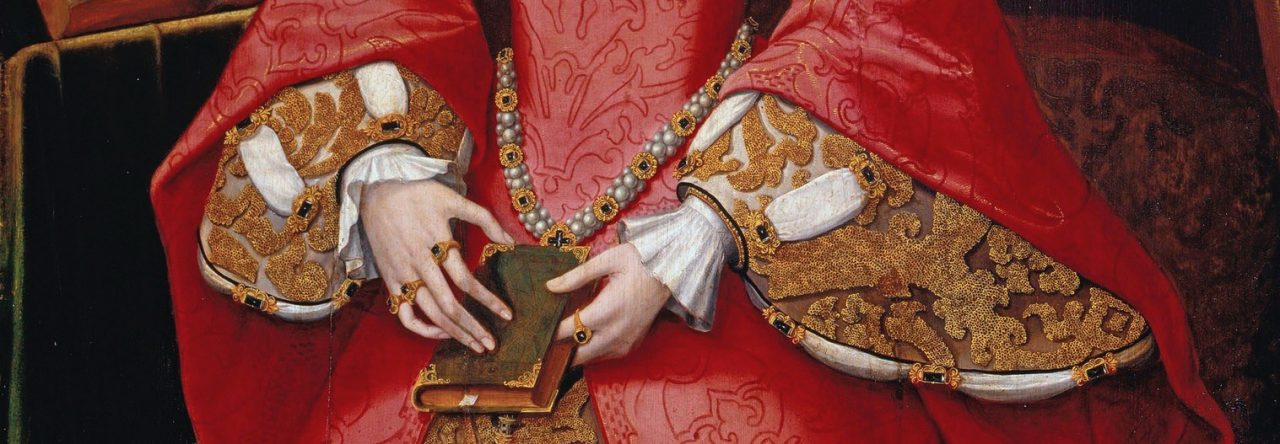By Mark Byford

This book, which advocated that the English church should do away with government by bishops and move instead to a Presbyterian model, was sufficiently unorthodox to be printed abroad, by Michael Schirat in Heidelberg, in order to evade censorship. While it was likely to have been smuggled into England in a barrel, the elaborate binding betrays a book that was anything but hidden by its first owner.
And to compound the public association with this illicit text, that owner, Mary Mildmay (1527/8–1577), wrote her name boldly across the title page, making it clear that this was very much her book, not her husband’s. The complex subject matter of the work, and the quality of her handwriting, both imply that she was an exceptionally well-educated member of the elite.

Mary’s brother was none other than Elizabeth’s so-called “spymaster general,”Sir Francis Walsingham, and like him she was a convinced Protestant. She had been married since 1546 to an equally illustrious reformer, Sir Walter Mildmay (1520/21–1589), the founder of Emmanuel College, Cambridge.

Commons.
Sir Walter was very much one of Elizabeth I’s most trusted servants, so in the end he and his wife would have read this text with approval but would have held back from actively advocating its more radical opinions. Their Cambridge college was known for its strong Protestant leanings: when Elizabeth remarked, “Sir Walter, I hear you have erected a Puritan foundation,” his reply was, “no, madam, far be it from me to countenance anything contrary to your established laws; but I have set an acorn which, when it becomes an oak, God alone knows what will be the fruit thereof” (Lehmberg 226). Mary died in March 1577, just three years after this book was published.

The later inscription of the motto of Mildmay Fane, second Earl of Westmoreland “Solus Deus Protector Meus. W,” shows that the book passed down the family through Mary’s favourite grandchild, also Mary (1581/2–1640), daughter of Sir Anthony Mildmay. This Mary Mildmay was Mildmay Fane’s mother, having married Francis Fane, the first earl, in 1599.
Source: book in private collection. Photos by Mark Byford, reproduced with permission.
Further Reading
S. E. Lehmberg, Sir Walter Mildmay and Tudor government. Austin, TX, 1964.
“Mildmay, Sir Walter (1520/21–1589), administrator and founder of Emmanuel College, Cambridge,” by L. L. Ford, Oxford Dictionary of National Biography, 2008. https://doi-org.access.authkb.kb.nl/10.1093/ref:odnb/18696




